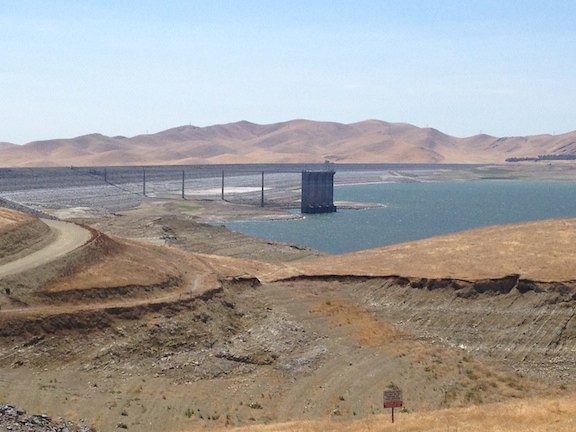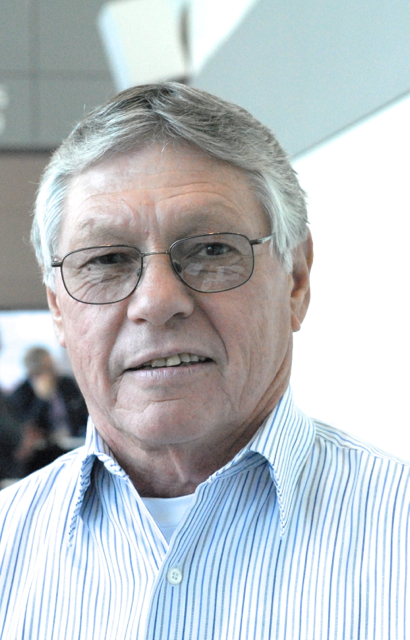Interior Assesses California Water
U.S. Department of Interior’s Tom Iseman Assesses California Water
Tom Iseman, deputy assistant secretary for water and science at the U.S. Department of the Interior, in an exclusive interview with California Ag Today’s farm news director, Patrick Cavanaugh, assessed how California is faring given the drought.
Cavanaugh: I see you as someone who focuses on not just solutions but also the issues and tragedies caused by the extended drought in California. From your perspective, how is California doing and how could things be better?
Iseman: First of all, I think California is obviously on the leading edge for a lot of reasons, but the state is in the midst of an extended drought. So it is really forcing us to be smarter about how we address these water scarcity challenges. I have been very impressed with the way we have been able to really work together—the Bureau of Reclamation working with the state, the water users and the conservation groups—to think about how we can stretch our limited water supplies to meet these different purposes.

Tom Iseman, deputy assistant secretary, U.S. Department of the Interior (Source: https://www.linkedin.com/in/tom-iseman-3354aa7)
Cavanaugh: Obviously the country is not able to build another Hoover Dam, but does the Interior understand that we need more storage in California for the rainy days?
Iseman: Absolutely. There are different ways to do it, so we are looking at a number of projects. One is raising Shasta Dam; one is a new reservoir possibly on the upper San Joaquin River (Temperance Flats); and Sites Reservoir.
Cavanaugh: But those projects are a long way off, and they may never be built. What can California do now to increase its water portfolio?
Iseman: There are smarter ways we can build smaller-scale storage and new ways to operate our facilities to stretch water supplies to our advantage.
Cavanaugh: Could you talk about how we can use water differently? Desal is more expensive water, but water needs to be more expensive. When water gets more expensive, people conserve more, right? Talk about your vision of desal in America, particularly in California.
Iseman: Generally, clean water technology is a big part of what we need to be doing. It is not just building new storage; it’s being smarter with what we have. So, technology is a great way to do that. We have desalination, water recycling and water reuse. Having these options creates an opportunity for more partnerships. So now you can have cities recycling their water and sending their water supply to agricultural water users—a win-win situation. The city gets some revenue and deals with its wastewater, and agricultural water users get a new supply. That is the way we should be thinking—about the possible partnerships to take advantage of these options.
Cavanaugh: People building desal plants in cities like Santa Barbara, mothballed the plants when the rains came. We need to make desal part of the culture of these cities located on the ocean. I mean, does the Department of the Interior see that as a rational thing to do?
Iseman: It’s interesting. Obviously it has been done in other places, and they have invested quite a bit of money here in California. It comes down to economics; we don’t make the decision about whether a city builds or doesn’t build a desal plant, but it is part of the water supply list, potentially.
The challenges with desal is just the cost right now and how much energy and waste it can produce. And they are comparing that to the other options out there. Are there other technologies out there that we can use? Are there water markets or water rights I can acquire? Is there potential for new storage? I think the cost will help sort that out.
The part that cost doesn’t address in some ways—and it can be built in—is the uncertainty. One thing, I think, about a desal plant that people like is that you know there is going to be a water supply if you are on the ocean. And if you have the money and can generate the energy, you can get the water. As you see more uncertainty in our climate and in our existing water supplies, that would be one argument in favor of desal.
Cavanaugh: It is stable.
Iseman: Yes, and we need reliability.
Cavanaugh: Well, you talked about the cost and the economics, but we all need to pay more for water, and I’d be the first one. It would make everyone conserve more, right?
Iseman: Absolutely.
Cavanaugh: Maybe, raise the cost of water $10 a bill?
Iseman: Well, I’m not going to say we are going to raise people’s water rates, but if you talk to the industry and look at the future of the industry, a lot of people say, ‘People need to pay more for water.’ That is how you get the investments.
The federal budget is constrained; they are not going to be there when we are going out and building Hoover Dam in ten years. We just don’t have that kind of resources anymore. So the question is, how do you get more revenue stream in to help contribute to the cost of those investments? And that goes back to rates. And at some point, we will have to decide how much we pay for water and how much we value our water.
Cavanaugh: Thanks for being aware of all this. Are you encouraged we will find solutions?
Iseman: We talk about California everyday; we are all very aware of the things that are happening. But I really gained an appreciation of the innovation, the energy and the cooperation of people here—the commitment they have in dealing with these issues. I was glad to be a part of it.
_____________________________






 “Farmers and ranchers are innovative and always trying to do the best they can to protect their land and water; but we all can do better. I think our producers respond to change in very good ways. Look, we have gone through technological advances; we are more technically precise in using fertilizers and water,” Carleton said.
“Farmers and ranchers are innovative and always trying to do the best they can to protect their land and water; but we all can do better. I think our producers respond to change in very good ways. Look, we have gone through technological advances; we are more technically precise in using fertilizers and water,” Carleton said.
















